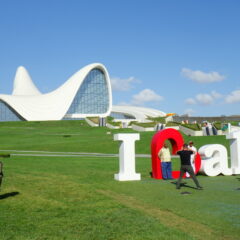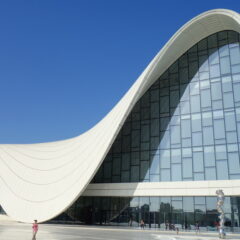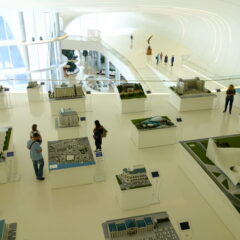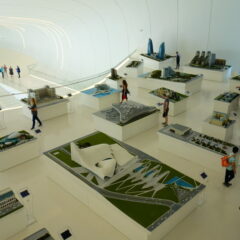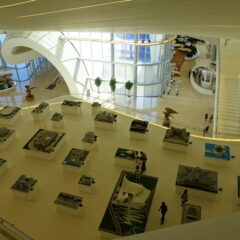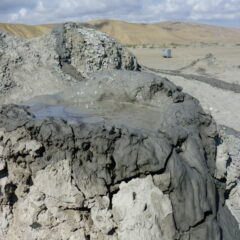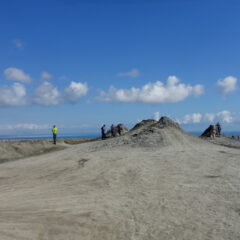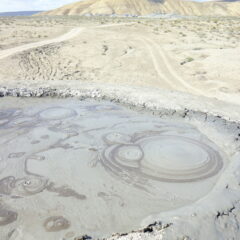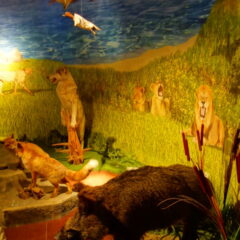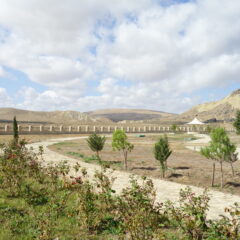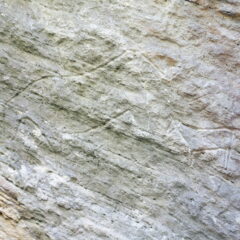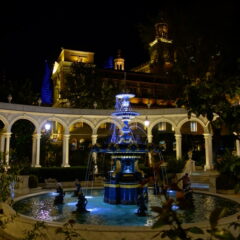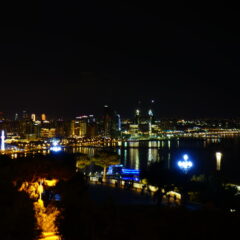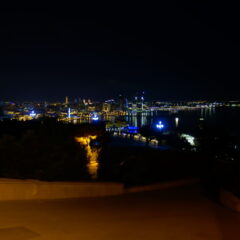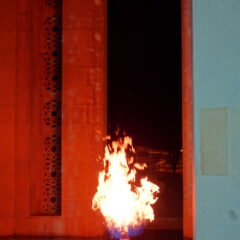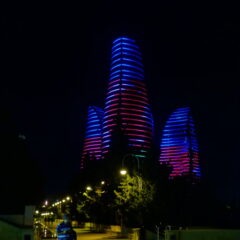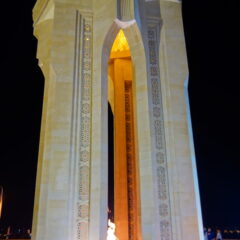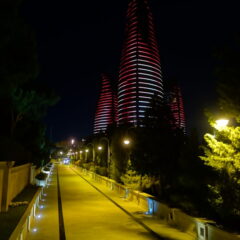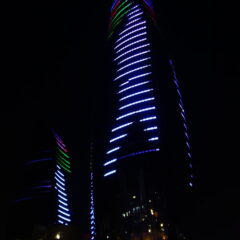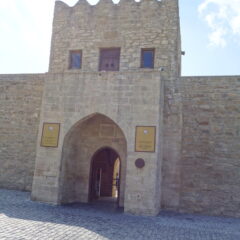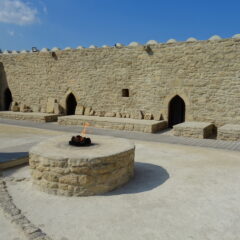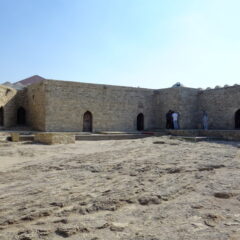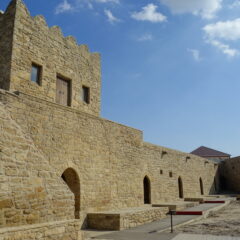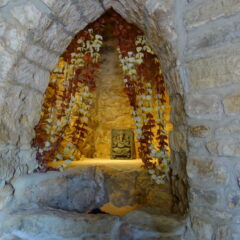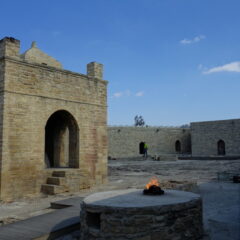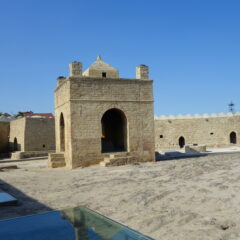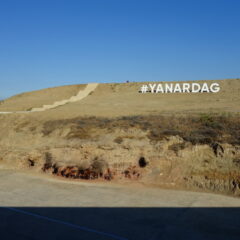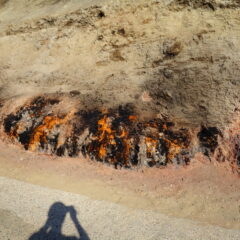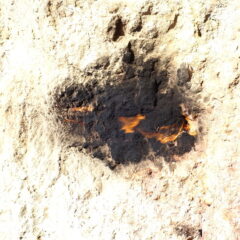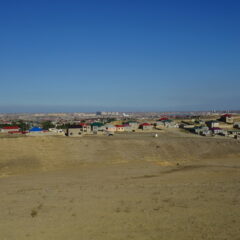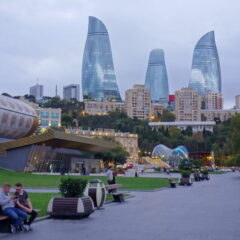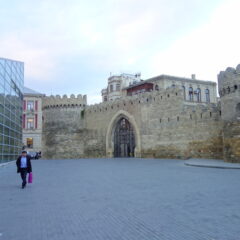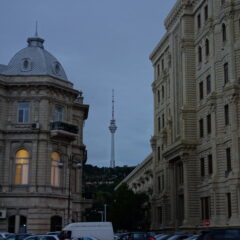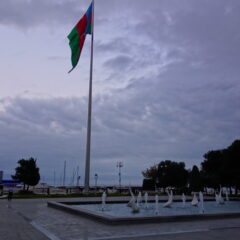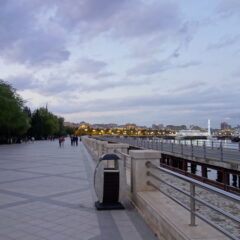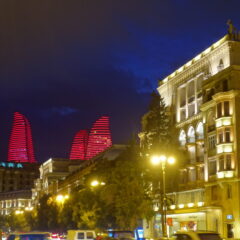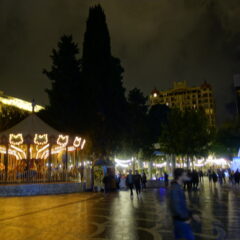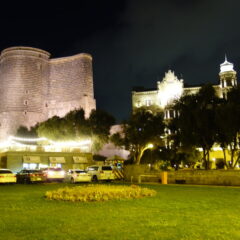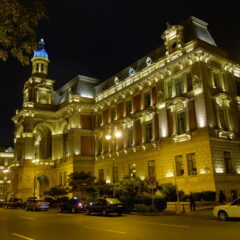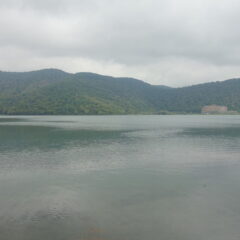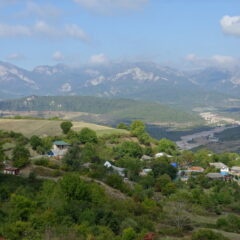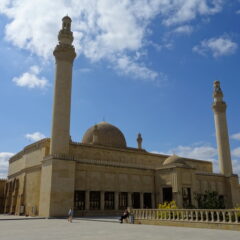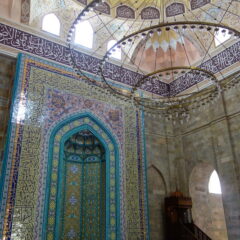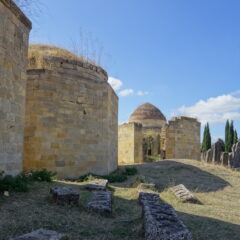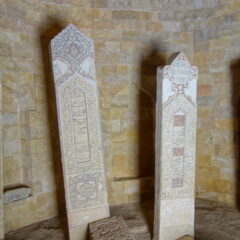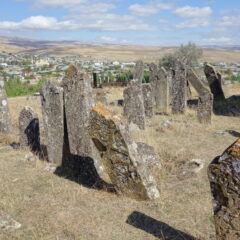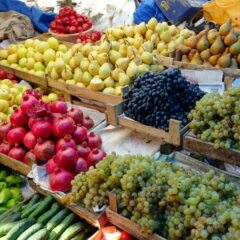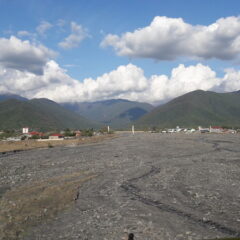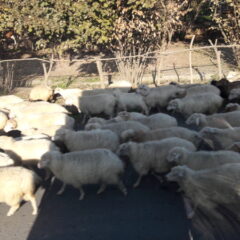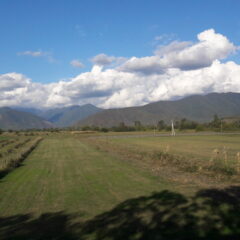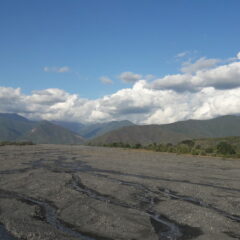We were heading back to town now, with a first stop in the outskirts of Baku, at Bibiheybat Mosque. It was not the mosque though, that we were interested in, but its square, offering nice view over Baku’s port.
From the mosque we did proceed to our last official stop, the Heydar Aliyev Cultural Centre / (Heydər Əliyev Mərkəzi). We spent some time looking at the building and its unusual architecture from the outside, though eventually did proceed to the inside.
The inside – next to a different view on the building itself – featured a number of exhibitions on various topics (some of which fairly random … some fairly good, other less so).
From the center it was – via a market (for some final souvenir shopping) – back to the hotel. With our flights scheduled in the very early morning, we knew a short night was a head of us and with half the group being sick, we did not manage a final group dinner.
The trip has been an interesting one – covering three countries, a total of seven UNESCO world heritage sites (six cultural, one natural), two mosques and at least 30 churches and monasteries – all of which at high pace.
During the trip the similarities – but also differences between the three countries have become obvious – from religion, food, drinks to the development after the collapse of the Soviet Union and the resulting political systems.
Though – what did become apparent – even with this long and (according to the trip brochure) all-encompasing trip, we had just scratched the surface – with all three countries deserving a return … though then (at least for me) with a focus on nature and less so on culture and history.



